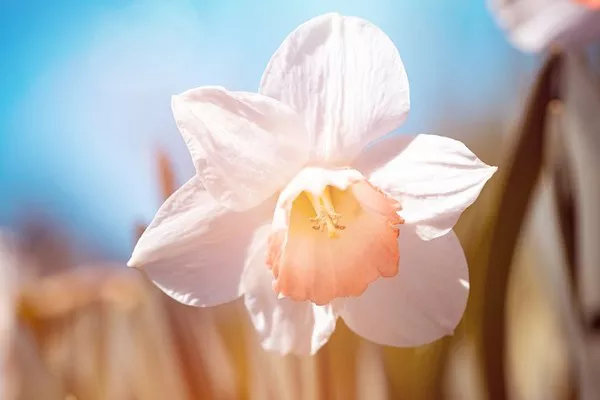Deer are beautiful creatures that can add a touch of nature’s majesty to any landscape. However, they can also be a significant challenge for gardeners and homeowners, as they often view our carefully cultivated gardens as a buffet. To protect your precious plants and maintain the beauty of your outdoor space, it’s essential to select deer-resistant flowers. In this article, we’ll explore which flowers deer tend to avoid and provide valuable insights on how to create a deer-resistant garden.
Understanding the Deer Problem
Deer can wreak havoc on gardens, decimating flowers, shrubs, and trees. This behavior is primarily driven by their need for sustenance. Deer are herbivores and rely on vegetation for their diet. In regions where deer populations are thriving, these creatures can quickly strip a garden of its beauty and nutrients. Understanding which flowers deer dislike can help gardeners make informed choices and protect their plants effectively.
Deer-Resistant Flower Categories
Deer resistance in flowers can vary depending on various factors, including location, climate, and the specific deer population in your area. However, there are several categories of flowers that are generally considered to be less appealing to deer. These categories include:
Fragrant Flowers: Deer often rely heavily on their sense of smell to locate food. Flowers with strong, pungent scents can deter deer from grazing in your garden. Examples of fragrant deer-resistant flowers include lavender, Russian sage, and daffodils.
Toxic or Bitter Flowers: Some flowers contain compounds that are toxic or bitter to deer. While these compounds may not necessarily harm the deer, they can discourage them from consuming the plants. Examples of such flowers include foxglove, hellebore, and daffodils.
Prickly or Thorny Plants: Flowers and shrubs with thorns or prickly leaves can be a natural deterrent to deer, as they are less likely to browse on plants that may cause injury. Roses, barberry, and holly are excellent examples of deer-resistant plants with thorns.
Texture and Foliage: Deer tend to avoid plants with coarse or fuzzy textures. Flowers with rough leaves or spiky foliage can be less appealing to deer. Lamb’s ear and yarrow are two examples of deer-resistant flowers with unique textures.
Native Plants: Native plants often have evolved alongside local wildlife, and deer may be less likely to feed on them. Researching and incorporating native flowers into your garden can be an effective way to deter deer.
Deer-Resistant Flower Varieties
Now that we’ve explored the categories of deer-resistant flowers let’s delve into some specific varieties that you can consider for your garden.
Lavender (Lavandula spp.): Lavender is not only a fragrant delight but also a strong deer deterrent due to its potent aroma. Its gray-green foliage and vibrant purple flowers make it a beautiful addition to any garden.
Daffodils (Narcissus spp.): Daffodils contain toxic compounds that deer tend to avoid. These bright and cheery spring flowers come in various colors and shapes, adding a burst of color to your garden.
Russian Sage (Perovskia atriplicifolia): Russian sage boasts a striking silver-gray foliage and lavender-blue flowers. Its strong fragrance can help keep deer at bay, and it thrives in sunny, well-drained locations.
Foxglove (Digitalis purpurea): Foxglove contains toxic compounds, making it unpalatable to deer. Its tall spikes of tubular flowers add vertical interest to the garden, and it comes in a range of colors.
Barberry (Berberis spp.): Barberry shrubs have thorny branches that can deter deer from browsing. They offer colorful foliage in shades of green, red, or burgundy, making them a visually appealing choice.
Hellebore (Helleborus spp.): Also known as Lenten rose, hellebores produce elegant, nodding flowers in various shades. Their toxic compounds discourage deer from nibbling on them.
Yarrow (Achillea spp.): Yarrow’s finely textured, fern-like leaves and flat-topped clusters of flowers come in a wide range of colors. Its texture and strong scent make it a less desirable option for deer.
Daylilies (Hemerocallis spp.): Daylilies are a popular choice for deer-resistant gardens, thanks to their bitter-tasting foliage. They produce an array of colorful blooms, and their name reflects their short-lived, one-day flowers.
Creating a Deer-Resistant Garden
While selecting deer-resistant flowers is a critical step in protecting your garden, there are additional strategies you can employ to create a more deer-resistant landscape:
Plant in Groups: Cluster deer-resistant plants together in your garden rather than scattering them. This makes it less likely that deer will find them among less deer-resistant options.
Use Fencing: Installing a deer-resistant fence around your garden can be a highly effective way to keep deer at bay. Ensure the fence is at least 8 feet tall and constructed with materials that deer cannot easily jump over or push through.
Repellents: Deer repellents, whether natural or commercial, can be applied to your garden plants to deter browsing. These substances create odors or tastes that are unpleasant to deer.
Motion-Activated Sprinklers: Motion-activated sprinkler systems can startle and deter deer when they approach your garden. They are a humane and effective way to protect your plants.
Companion Planting: Some plants, when grown alongside others, can help deter deer. For example, planting garlic or onions near vulnerable plants can provide a natural deterrent.
Regular Maintenance: Keep your garden clean and well-maintained. Remove fallen fruit, trim overgrown areas, and eliminate tall grasses where deer might hide.
Conclusion
Dealing with deer in your garden can be challenging, but with careful planning and the selection of deer-resistant flowers, you can create a beautiful and flourishing outdoor space that coexists harmoniously with local wildlife. Remember that deer-resistant does not mean deer-proof, so it’s essential to combine plant selection with other protective measures to safeguard your garden. By incorporating the knowledge and strategies outlined in this article, you can enjoy the splendor of your garden while minimizing the risk of deer damage.


